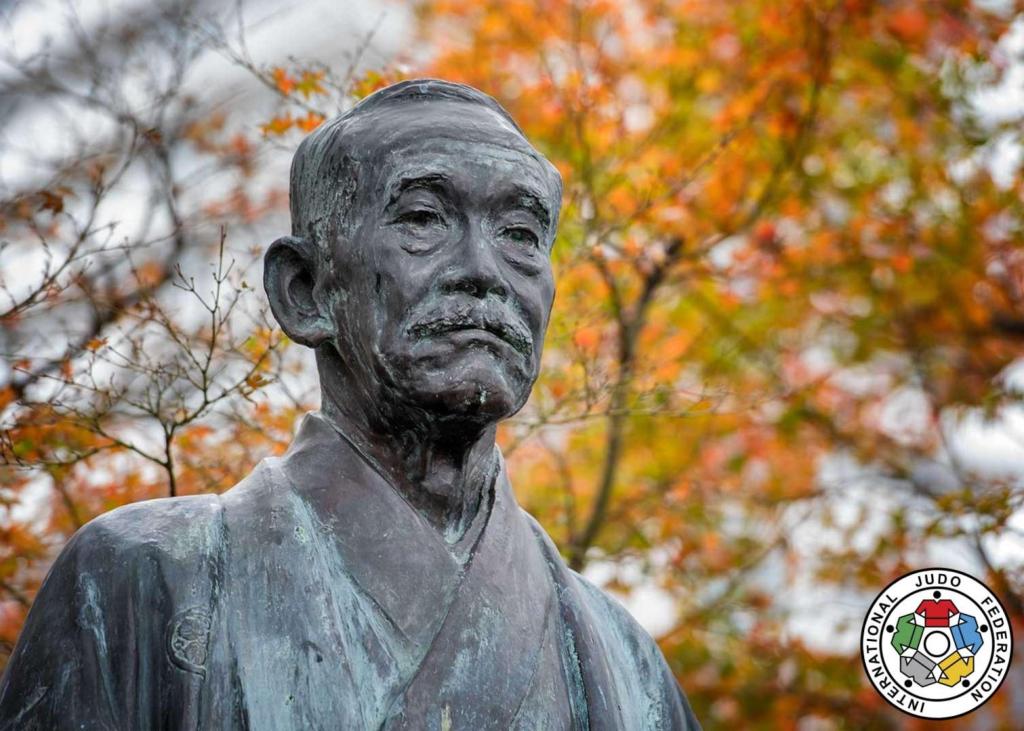Associate Professor in Japanese Language and Civilisation from the University of Toulouse Jean Jaurès and member of the EJU Scientific Commission, Mr Yves Cadot (6th Dan), has translated original text from Jigoro Kano. We will continue with the part four for the attention of judo specialists.
The text translated firstly in to French – with the link available in his quote directly below – and then in to English has allowed a further insight in to the workings of Jigoro Kano.
Because many of us are frustrated in these days of closed dojos, deprived of the physical link to our discipline, to others, and because judo teaches us to transform situations into opportunities, I suggest we take this opportunity to take an account of our own practice through the writings of Kano Jigoro.
The idea is to offer every day, until the reopening of the dojos, a quote, a few lines or pages, raw, without comments (but sourced!) to feed our knowledge, feed our thinking, cultivate us. You will find them, if possible in the early morning, in my Hypotheses.org research notebook (Le dire en corps), in the section ‘Une journée, un texte’.
Part Four: Purpose of the special section of randori exercise I am about to put in place at the Kodokan
“As I continually explain, the main goals of judo randori are martial aspects and physical education. In the case of martial technique, the objective is to be able, in a real combat, to prevail over the other and to protect oneself; in the case of physical education, ambition is a strong, healthy, useful body.
However, in the randori as it is widely practiced today, because it was spread too quickly and the instructions did not follow, practitioners make mistakes without realising it, which means that it is practiced in an unsuitable way regarding a real confrontation and also inadequate in terms of physical education. As no one in the dojo actually attacks with an atemi, cuts with a knife or shreds with a saber, those who recklessly adopt an attitude that makes it difficult for them to escape quickly when attacked, legs apart, hips lowered and head forward, are not uncommon. In addition, in terms of physical education, although the idea is to have to develop the body in a harmonious and balanced way, they use their muscles against this principle, place force wrongly and indiscriminently in the arms, legs or the whole body, which prevents them from moving in a lively and free way.
So, if we do not amend as quickly as possible the practice as above which is widespread today, the value of randori both on the martial dimensions and physical education becomes extremely low, I’m thinking to set up a special training section at Kodokan, teaching the right way to do randori and exercising there. Because it is impossible to practice in large numbers at once, I will first select a small number of people, give them special education, and as their way of practicing, after having received appropriate training, will have significantly changed, I think that even ordinary practitioners, seeing and learning from this, will rectify their way of doing randori and it will spread to all gradually. I intend, as far as possible, to participate in it and teach myself for a while, or to ask someone that, among the higher grades, I will recognise as the suitable person, to participate specially and to give him the responsibility of teaching.
So, if the need to teach directly how to do randori is obvious, I think there are different points that need improvement in the way of refereeing so far. Until now, we often let pass attitudes that would not forgive for a moment in real combat, and I am convinced that if, in the future, we would add as an improvement to the way of refereeing by giving a warning [lit. : “Give chûi”] each time and if, despite this, the fighter often repeated this error, they declared his defeat, the way of training would ultimately change radically. If I put this section in place, I intend to make it known as widely as possible by posting in the dojo and publication in this review, but it would be good if those who read this article are determined in advance to join this training. Of course, if there were too many people, I would select the appropriate number, practise, and gradually increase the numbers participating.”
Kanô Jigorô 嘉納治五郎. « Chikaku Kōdōkan ni mōken to suru randori tokubetsu renshūka no mokuteki ni tsuite 近く講道館に設けんとする乱取特別練習科の目的について (A propos de l’objectif de la section spéciale d’exercice de randori que je compte bientôt mettre en place au Kōdōkan) ». Jūdō 柔道. Juin 1937.
Related Articles – WORKING TRANSLATION OF JIGORO KANO
Part 1
Part 2
Part 3
Part 4
Part 5
Author: Sören Starke




